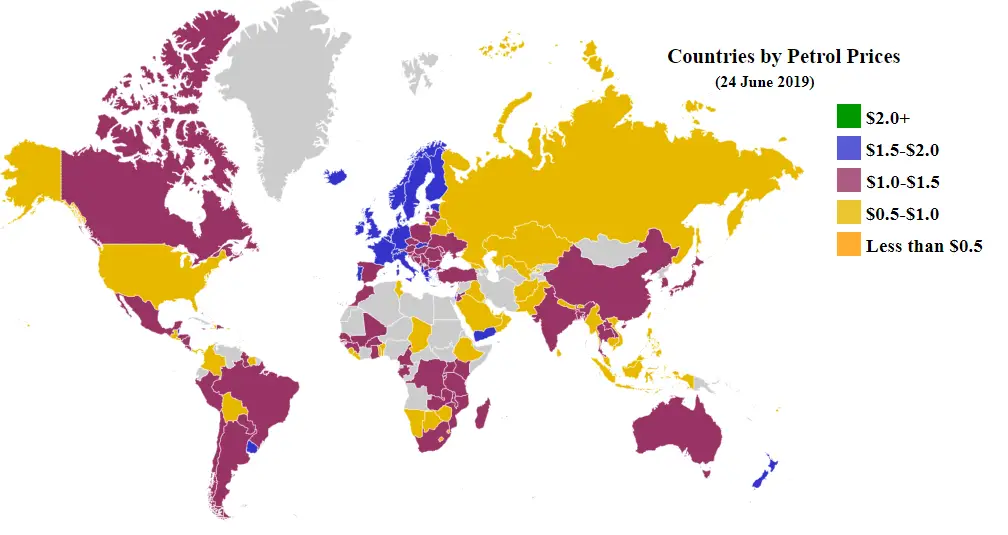Those who have been to Europe or Britain (or vice versa, Europeans who have visited the United States) have the feeling that American cities are completely different from European or British. The “image of the city” in America, which is unconsciously formed in the memory, leaves the feeling that some American cities, for example, Los Angeles, Miami or San Diego, “feel” completely different from European cities. But there are also many cities that are distinctly reminiscent of Europe. Despite this, most American cities look completely different. In this article, I will try to quickly explain why this happened.
The Main Difference Between American and British and European Cities
In the American city, there is a large business center in which people work in offices and go there on business. Americans use cars and live in the suburbs. As a result, public transport in cities is not very developed, as it is not needed and is mainly used by low-income people.
In Europe and Britain, on the contrary, it is considered prestigious to live closer to the center, and in cities, there is still no single business center and offices can be scattered around the city. People in European cities use mainly public transport, trying to use cars for trips out of town and around the country.
But besides demonstrating the differences, many people, including me, were interested in why such differences arose. So why is that?
Why European Cities Are So Small?
European cities, like the British ones, were created a long time ago and have a very long history. Paris was founded in the third century BC. The city initially developed as a Roman colony, and then as a medieval city. The situation is similar to the British capital London, which also developed as a medieval city. As a result, European cities are much older than American.
And this age difference provoked differences in the density and places of people in cities. When European cities were built and created, there were simply no fast and convenient means of transportation in the world, such as cars, subways or trains. Because of this, a trip from one remote part of the city to the center took a very long time and was extremely tiring. Naturally, there were horse carriages, but they were very expensive and only the richest people could allow them. Most people moved around the city on foot, including the place of work. And work, especially prestigious, was in the center. This led to the emergence of expensive centers (which were formed near the residences of kings or lords), where the cost of housing was the highest in the city. If you analyze the map of any medieval city in Europe or Britain, it is noticeable that the farther from the center, the cheaper the housing and land.
People tend to strive for a better lifestyle, so many saved up money to live closer to the city center. So there was a multi-story building, which caused a high population density in the city center.
Saving space has become a key feature of European and British cities, so many of the streets of Paris or London are much narrower than the streets of New York, Chicago or Los Angeles.
Why are American Cities Big and Weirdly Shaped?
American cities in comparison with European and British seem like giants. Many Europeans have misconceptions that American cities consist entirely of skyscrapers. This, of course, is not the case, which confirms the following map.

If you look at Wikipedia, we find out that London is almost equal in population to New York. But if you look at the map, then New York is much larger. This is because American cities arose and developed rapidly during the time when the first trains and then cars already appeared, but were expensive. As a result, those who could afford to ride the train and then buy a car moved to the suburbs, since then the cost of their own home was even lower than the cost of the apartments. Over time, cars became available to almost any American, and people, wanting to have their own homes, began to actively move to the suburbs, leaving the city to poorer segments of the population. And here is the question: haven’t cars become affordable in Europe?
The answer will be obvious: Western Europe is no poorer than the United States, and people there could also afford cars. But European countries are much smaller than the United States. Americans do not need to live in apartment buildings, as the country has a lot of space to build private houses. In Europe, in the 19th century, the land was already divided between large landowners and the cost of building a house was significantly higher.
There is also another reason why European cities did not begin to grow in breadth. At a time when cities were actively developing, the American economy was still concentrated around agriculture, while in England and France industry took a key place and people sought to live near their cities. In the 20th century, European cities also did not grow in width, not only because of the high cost of land but also because the British Authorities were actively developing public transport. Just remember or read about the famous London Underground, London buses or European trams.
In America, the authorities developed a different concept, building-wide roads and making many parking lots for personal cars. Moreover, the use of a personal car is highly dependent on the cost of gasoline and parking. In the United States, gas is cheap enough, but in Europe, that gas, that parking costs exorbitant money. Just look at how much more gasoline costs in Europe. This explains why Europeans prefer not to use cars.

Summing up, all these minor differences led to a situation where European and American cities were very different. And the main role in this was played by the car.






